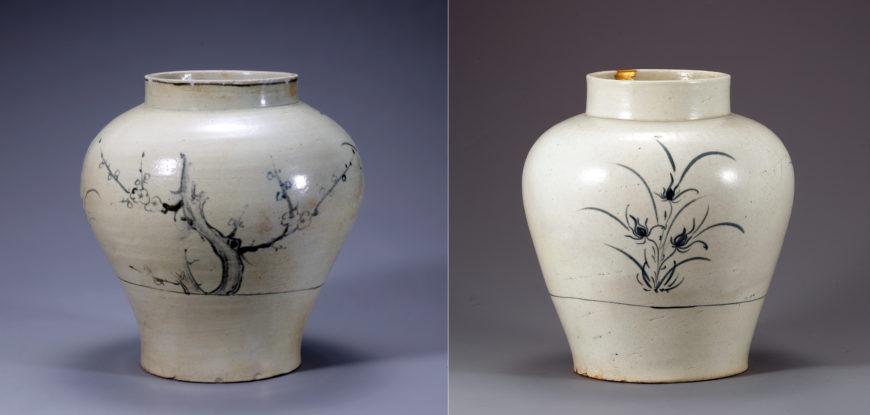- Get link
- X
- Other Apps
Korean Ceramics – Celadon & White Porcelain
🏺 Celadon (Cheongja)

Photo: Goryeo celadon jar with jade-green glaze and inlay decoration.
Goryeo celadon (Cheongja) is revered as one of Korea’s greatest artistic legacies. Developed in the 10th–14th centuries, its distinctive jade-green glaze and elegant forms embody the ideals of refinement and tranquility. Craftsmen employed techniques such as inlay (sanggam) to depict clouds, cranes, lotuses, and Buddhist symbols. Celadon was admired across East Asia, influencing Chinese and Japanese pottery and valued in royal courts for its delicate grace.
⚪ White Porcelain (Baekja)

Photo: Joseon-era white porcelain vase representing purity and simplicity.
Baekja (Baekja), or white porcelain, flourished during the Joseon Dynasty (1392–1897), reflecting Neo-Confucian values of purity, humility, and simplicity. Made with refined white clay and fired at high temperatures, these porcelains feature smooth, bright surfaces often decorated with cobalt blue or iron-brown designs. Used in royal courts, Confucian rites, and everyday life, Baekja symbolizes the serene beauty at the heart of Korean aesthetics.
🪶 Buncheong Ware (Buncheong sagi)
Photo: 15th-century Korean Buncheong jar with brushed white slip decoration.
Buncheong ware developed during the early Joseon period as a more relaxed and expressive ceramic style. It evolved from Goryeo celadon traditions but favored simpler forms and artistic spontaneity. Artists used techniques like stamping, brushwork, and white slip application to create dynamic designs. Buncheong reflects the rustic beauty and everyday spirit of Korean life, bridging the elegance of celadon and the purity of white porcelain.
📌 You might also like: Minhwa: Korea?™s Traditional Folk Paintings
"- Get link
- X
- Other Apps
Comments
Post a Comment